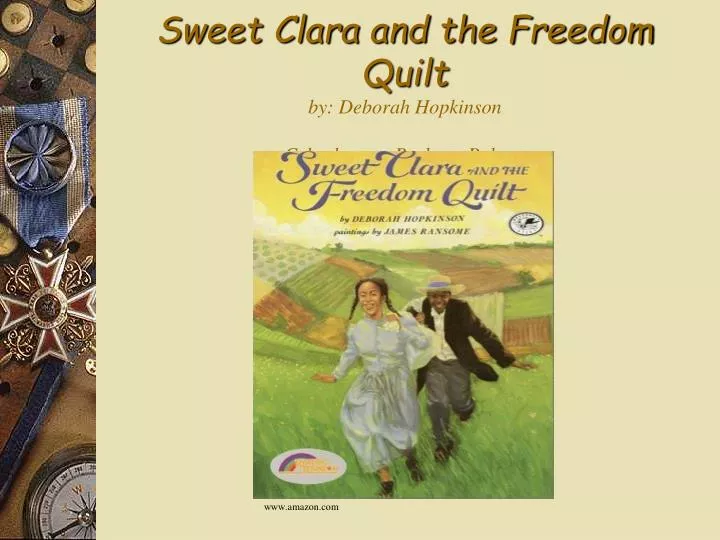
It ended up being Young Jack, but five days later they caught him. There were a bunch of people talking in the quarters, and Clara knew it wasīecause someone ran away. “Where you gon’ get to ‘cept lost in the swamp?’” She wrote,”’Crazy, runnin’ away,’ muttered Cook as she beat up some batter. The author wrote what cook said in the way she imagines enslaved people talking at that time, and I think it’s fun to read out loud that way because it helps me imagine the characters.

She said it would be crazy for one of them to run away because they’d get caught. The sewing room was near the kitchen so she could hear the cook talking. She couldn’t last in the fields so the person raising her, Aunt Rachel, got her a job in the big house as a seamstress. Includes one chart.Sweet Clara and the Freedom Quilt by Deborah Hopkinson is about an enslaved girl named Clara who works in the fields with her best friend, Young Jack. A map scoring checklist a problem/solutions/events chart and an evaluation rubric are attached. The instructional plan, lists of resources, student assessment/reflection activities, and a list of National Council of Teachers of English/International Reading Association (NCTE/IRA) Standards addressed in the lesson are included. During three 45-60 minute lessons, students will: identify the various uses for quilts and describe the significance of Clara's quilt enhance their understanding of the Underground Railroad create a problems/solutions/events chart for "Sweet Clara and the Freedom Quilt" and apply mapping skills to make a "quilt map" showing their route from home to school. This lesson uses the picture book "Sweet Clara and the Freedom Quilt" by Deborah Hopkinson and an interactive website to enhance third- through fifth-grade students' understanding of the Underground Railroad and slavery, development of reading comprehension skills, and application of mapping skills.


 0 kommentar(er)
0 kommentar(er)
